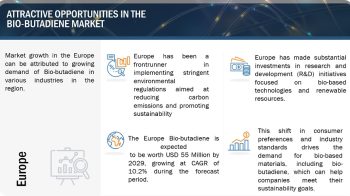In today’s dynamic world, industries are constantly searching for innovative solutions to improve efficiency, reduce costs, and minimize environmental impact. One significant area of innovation lies in the use of lightweight materials, which are gaining substantial ground across various industries. The chemical industry is no exception, as it discovers the myriad ways in which lightweight materials can revolutionize its processes and products.
The report “Lightweight Materials Market by Type (Composites, Metals, Plastics), Application (Automotive, Aviation, Marine, Wind Energy) – Global Trends & Forecast” defines and segments the global lightweight materials market with analysis and forecasting in terms of volume and value. The lightweight materials market value will grow from an estimated $88.5 billion in 2014 to $133.1 billion by upcoming years, at a CAGR of 8.5% for the projected period.
The automotive industry has a high share in the lightweight materials market. The lightweight materials market in automotive industry is in the growth stage and is estimated to grow exponentially. The adoption of light metals and composite materials to reduce weight of vehicles is the current trend in the industry boosting the overall demand for lightweight materials for automotive utilization. The need to enhance fuel efficiency of vehicles has led to replacement of traditional materials with lightweight materials.
Downlaod the PDF Brochure: https://www.marketsandmarkets.com/pdfdownloadNew.asp?id=144806797
The aviation industry has the second-largest share in the market. The aviation industry has been moving to lightweight materials as well. The stringent emission regulations have contributed to the growth of the market.
The top companies in the lightweight materials market include ArcelorMittal S.A. (Luxembourg), Alcoa Inc. (U.S.), Saudi Basic Industries Corporation (Saudi Arabia), PPG Industries, Inc. (U.S.), and Toray Industries, Inc. (Japan) among others. The lightweight materials industry has witnessed high expansion and new product launches in the recent past.
The Evolution of Lightweight Materials
Lightweight materials encompass a wide range of substances, each with its unique properties and applications. These materials are characterized by their low density, which makes them significantly lighter than traditional alternatives. The most common lightweight materials include polymers, composites, and advanced metals such as aluminum and titanium.
In the chemical industry, the quest for lightweight materials stems from several key drivers:
- Enhanced Efficiency
Lightweight materials can significantly reduce the weight of equipment, transportation vessels, and structures used in the chemical industry. This translates into lower energy consumption, decreased wear and tear on equipment, and improved overall efficiency. As chemical processes often involve the handling of corrosive and abrasive substances, equipment made from lightweight materials can provide a more sustainable and cost-effective solution.
- Improved Sustainability
The chemical industry is under increasing pressure to reduce its carbon footprint and environmental impact. Lightweight materials offer a sustainable alternative, as they can help decrease emissions associated with transportation and manufacturing processes. This aligns with the industry’s commitment to environmental responsibility and compliance with stringent regulations.
Speak to Analyst: https://www.marketsandmarkets.com/speaktoanalystNew.asp?id=144806797
- Cost Reduction
Lightweight materials, while often more expensive upfront, can yield substantial cost savings over time. Their durability and reduced maintenance requirements contribute to long-term financial benefits. Furthermore, the decreased weight of equipment and structures can lead to lower transportation and logistics costs.
Lightweight Materials in Chemical Equipment
The chemical industry relies on a wide range of equipment, from tanks and reactors to piping and valves. Incorporating lightweight materials in the design and manufacturing of this equipment can lead to several advantages.
- Corrosion Resistance
Many lightweight materials, including various composites, offer superior resistance to corrosion. This is a critical factor in the chemical industry, where exposure to aggressive chemicals is common. Equipment made from lightweight, corrosion-resistant materials can have a longer service life and require less maintenance.
- Energy Efficiency
Lightweight materials can help reduce the energy consumption of chemical processes. For instance, lightweight composites can be used to construct tanks and vessels, which require less energy for heating or cooling due to their excellent insulating properties. This can result in substantial energy savings over time.
- Transport and Installation
The transportation of heavy equipment can be costly and logistically challenging. Lightweight materials can simplify the transport process, reduce fuel consumption, and lower transportation costs. Additionally, the ease of handling lightweight equipment during installation can streamline project timelines.
Request for New Version: https://www.marketsandmarkets.com/RequestNewVersion.asp?id=144806797
Applications in Chemical Processes
Lightweight materials find applications not only in equipment but also within chemical processes themselves. For example:
- Catalysis
Lightweight materials can be used as catalyst supports in chemical reactions. Their high surface area and tailored properties make them ideal for enhancing catalytic processes, reducing the need for heavy and bulky catalytic systems.
- Filtration
Lightweight materials with micro- and nanoporous structures are valuable for filtration and separation processes. These materials can efficiently remove impurities and contaminants from chemical solutions, contributing to cleaner and more sustainable processes.
The Future of Lightweight Materials in the Chemical Industry
The adoption of lightweight materials in the chemical industry is expected to grow significantly in the coming years. As environmental concerns and sustainability initiatives gain momentum, the industry will continue to seek lightweight alternatives that reduce its ecological footprint. Additionally, advancements in material science will drive the development of new lightweight materials with enhanced properties, further expanding their scope in the chemical sector.
In conclusion, lightweight materials have the potential to revolutionize the chemical industry by improving efficiency, sustainability, and cost-effectiveness. As the industry embraces these materials, we can expect to see innovative applications and transformative changes in how chemicals are produced, processed, and transported. This journey towards lighter and more efficient processes represents a promising future for the chemical industry and the environment.
In today’s dynamic world, industries are constantly searching for innovative solutions to improve efficiency, reduce costs, and minimize environmental impact. One significant area of innovation lies in the use of lightweight materials, which are gaining substantial ground across various industries. The chemical industry is no exception, as it discovers the myriad ways in which lightweight materials can revolutionize its processes and products.
Inquire Before Buying: https://www.marketsandmarkets.com/Enquiry_Before_BuyingNew.asp?id=144806797
The Evolution of Lightweight Materials
Lightweight materials encompass a wide range of substances, each with its unique properties and applications. These materials are characterized by their low density, which makes them significantly lighter than traditional alternatives. The most common lightweight materials include polymers, composites, and advanced metals such as aluminum and titanium.
In the chemical industry, the quest for lightweight materials stems from several key drivers:
- Enhanced Efficiency
Lightweight materials can significantly reduce the weight of equipment, transportation vessels, and structures used in the chemical industry. This translates into lower energy consumption, decreased wear and tear on equipment, and improved overall efficiency. As chemical processes often involve the handling of corrosive and abrasive substances, equipment made from lightweight materials can provide a more sustainable and cost-effective solution.
- Improved Sustainability
The chemical industry is under increasing pressure to reduce its carbon footprint and environmental impact. Lightweight materials offer a sustainable alternative, as they can help decrease emissions associated with transportation and manufacturing processes. This aligns with the industry’s commitment to environmental responsibility and compliance with stringent regulations.
- Cost Reduction
Lightweight materials, while often more expensive upfront, can yield substantial cost savings over time. Their durability and reduced maintenance requirements contribute to long-term financial benefits. Furthermore, the decreased weight of equipment and structures can lead to lower transportation and logistics costs.
Get 10% Customization on this Report: https://www.marketsandmarkets.com/requestCustomizationNew.asp?id=144806797
Lightweight Materials in Chemical Equipment
The chemical industry relies on a wide range of equipment, from tanks and reactors to piping and valves. Incorporating lightweight materials in the design and manufacturing of this equipment can lead to several advantages.
- Corrosion Resistance
Many lightweight materials, including various composites, offer superior resistance to corrosion. This is a critical factor in the chemical industry, where exposure to aggressive chemicals is common. Equipment made from lightweight, corrosion-resistant materials can have a longer service life and require less maintenance.
- Energy Efficiency
Lightweight materials can help reduce the energy consumption of chemical processes. For instance, lightweight composites can be used to construct tanks and vessels, which require less energy for heating or cooling due to their excellent insulating properties. This can result in substantial energy savings over time.
- Transport and Installation
The transportation of heavy equipment can be costly and logistically challenging. Lightweight materials can simplify the transport process, reduce fuel consumption, and lower transportation costs. Additionally, the ease of handling lightweight equipment during installation can streamline project timelines.
Applications in Chemical Processes
Lightweight materials find applications not only in equipment but also within chemical processes themselves. For example:
- Catalysis
Lightweight materials can be used as catalyst supports in chemical reactions. Their high surface area and tailored properties make them ideal for enhancing catalytic processes, reducing the need for heavy and bulky catalytic systems.
- Filtration
Lightweight materials with micro- and nanoporous structures are valuable for filtration and separation processes. These materials can efficiently remove impurities and contaminants from chemical solutions, contributing to cleaner and more sustainable processes.
The Future of Lightweight Materials in the Chemical Industry
The adoption of lightweight materials in the chemical industry is expected to grow significantly in the coming years. As environmental concerns and sustainability initiatives gain momentum, the industry will continue to seek lightweight alternatives that reduce its ecological footprint. Additionally, advancements in material science will drive the development of new lightweight materials with enhanced properties, further expanding their scope in the chemical sector.
In conclusion, lightweight materials have the potential to revolutionize the chemical industry by improving efficiency, sustainability, and cost-effectiveness. As the industry embraces these materials, we can expect to see innovative applications and transformative changes in how chemicals are produced, parocessed, and transported. This journey towards lighter and more efficient processes represents a promising future for the chemical industry and the environment.


